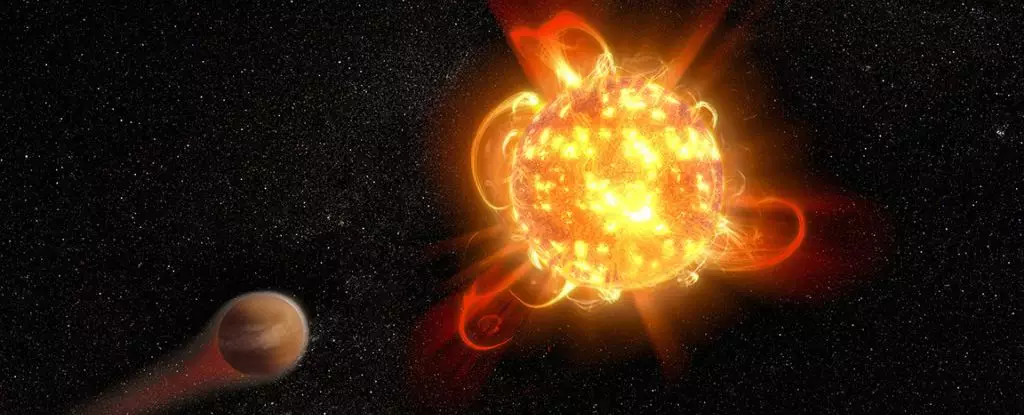Red dwarf stars, classified as M-class stars, constitute a significant majority of the stellar population in our Milky Way galaxy, making up around 70% of all stars. These relatively small celestial bodies are cooler than our Sun, demonstrating characteristics such as reduced mass and surface area. Their lower temperatures allow them to conserve fuel, leading to exceptionally long lifetimes, often spanning billions of years. This stability has prompted astronomers and astrobiologists alike to consider red dwarfs as potentially favorable environments for the formation of rocky planets that could reside in habitable zones—the region around a star where conditions might support liquid water, an essential ingredient for life as we know it.
Despite their apparent benign nature, red dwarfs come with a caveat: they are notorious for producing a high frequency of stellar flares. These energetic bursts can emit intense radiation and result in environment-altering effects on orbiting planets. Hence, while red dwarfs may be viewed as promising hosts for the search for extraterrestrial life, their propensity for unpredictability raises significant concerns regarding the habitability of their surrounding planets.
A recent study based on data obtained from the defunct GALEX space telescope has brought new insights into the nature and impact of these stellar flares. Researchers analyzed information covering ten years from over 300,000 stars, narrowing their focus to 182 flares originating specifically from red dwarf systems. Most studies of stellar flares have predominantly concentrated on visible optical radiation, but this research dives deeper, assessing the ultraviolet (UV) radiation emitted during these events.
The ultraviolet radiation produced during flares can span from near-UV (175-275 nm) to far-UV (135-175 nm) wavelengths. While UV radiation is not inherently detrimental to the precursor molecules necessary for life, an excessive amount poses a grave risk. A critical aspect emphasized by the study is the dosage of radiation—the notion that while moderate UV levels could even facilitate the synthesis of complex organic compounds, excessive levels may decimate an exoplanet’s atmosphere, particularly its protective ozone layers.
Previous research methodologies have often relied on modeling the emissions from stellar flares as blackbody radiation, assuming a standard temperature around 8,727 degrees Celsius (15,741 degrees Fahrenheit). However, the findings reported in this recent paper indicate that such models are inadequate for accurately depicting the flare emissions observed. In fact, a startling 98% of the flare events examined exhibited ultraviolet outputs surpassing common expectations for such blackbody models.
This revelation signifies that many prior assessments of habitability conditions surrounding red dwarfs may have drastically underestimated the hazardous UV radiation that can result from stellar flares. The implications of this newfound understanding can be profound for astrobiology, potentially recalibrating our search for life beyond Earth by adding a layer of complexity to the evaluation of exoplanetary environments.
If the occurrence of flares from red dwarfs generates vastly more UV radiation than previously believed, the consequences for any orbiting planets could be dire. While these planets might meet other essential characteristics for harboring life, such as being situated in a habitable zone with surface temperatures conducive to liquid water, the UV bombardment could endanger their atmospheres and surface conditions. As the protective layers erode, the very essence of habitability—atmospheric protection and stability—can be severely undermined.
Astronomers need to contextualize this knowledge within ongoing efforts to identify exoplanets that might support life. It suggests that despite the apparent habitable conditions, planets in red dwarf systems could potentially be more inhospitable than currently understood.
The new findings regarding the radiation emitted by red dwarf stars highlight a crucial shift in our understanding of star systems that may lead us in our search for extraterrestrial life. While M-class stars might be attractive candidates due to their longevity and frequent planetary systems, we must also critically consider the dramatic effects of their stellar flares. This evolving understanding urges a reassessment of the conditions necessary for life and emphasizes the need for a more nuanced approach when forecasting the potential habitability of exoplanets within red dwarf systems. As we venture deeper into the cosmos, the complex interplay of stellar behavior and planetary environment will be pivotal in mapping the prospects for life beyond our planet.


Leave a Reply